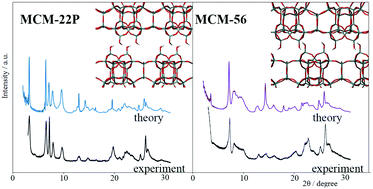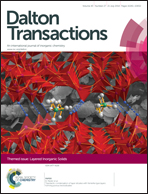Theoretical investigation of layered zeolites with MWW topology: MCM-22P vs. MCM-56
Abstract
The inter-layer interactions and the possible arrangements of MWW-type layers were investigated computationally at the non-local density functional theory level. Powder XRD patterns were simulated for structures obtained computationally and compared with experimental data. The MCM-22P material corresponds to the layers bound with relatively strong hydrogen bonds between surface silanol groups that is an energetically preferred structure in the presence of a structure directing agent (hexamethyleneimine). The powder XRD pattern of MCM-56 is best matched for relatively disordered (in the ab plane) MWW layers that are partially condensed. The appearance of the powder XRD pattern in the 2θ range of 7.5–10° depends on the extent of interlayer condensation. The combination of density functional investigation of interactions between MWW layers together with simulation of powder XRD patterns brings atomistic insight into the inter-layer arrangement and better understanding of the effects responsible for the differences between various layered materials of the MWW family.

- This article is part of the themed collection: Layered Inorganic Solids

 Please wait while we load your content...
Please wait while we load your content...